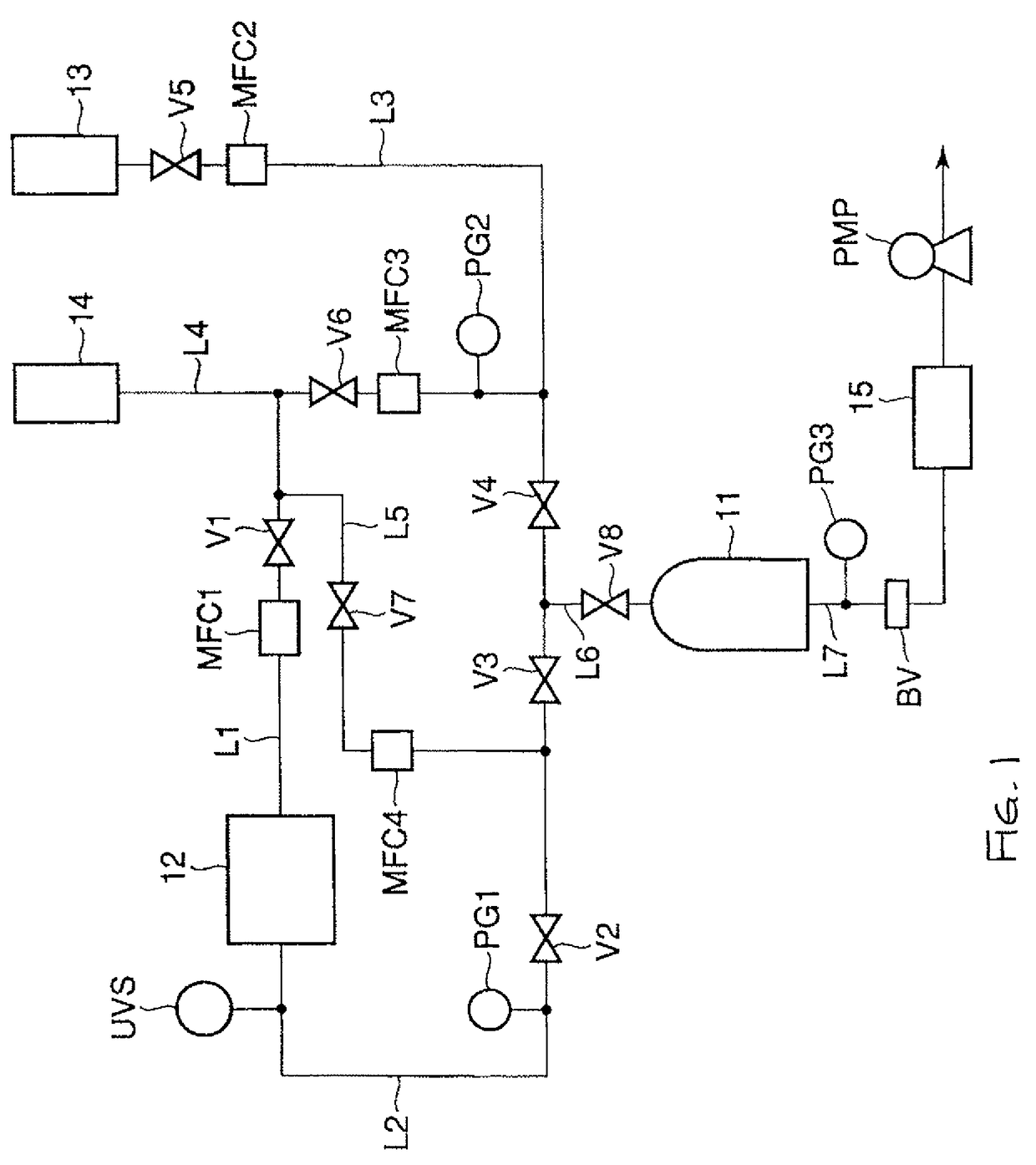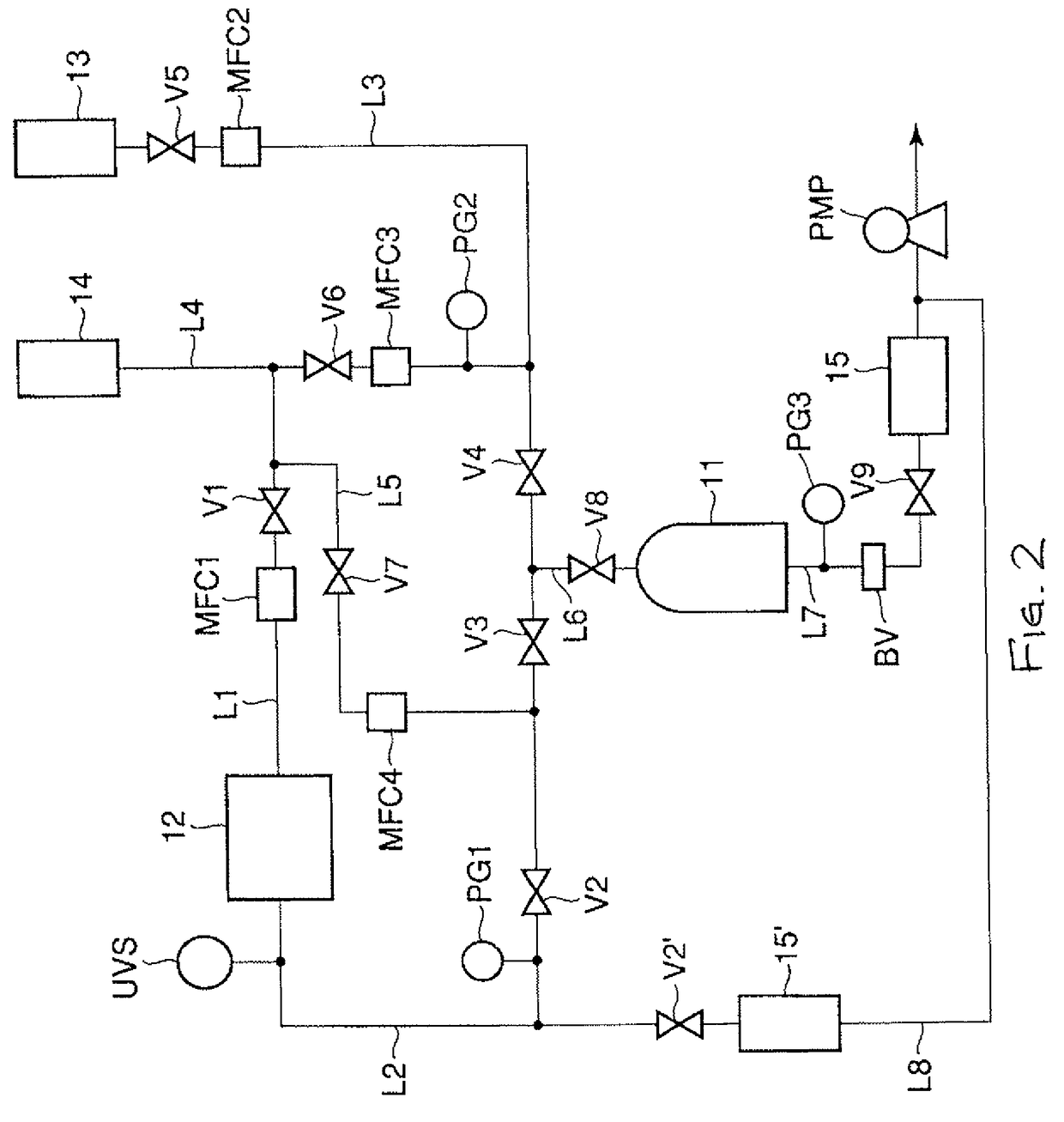Methods for forming a ruthenium-based film on a substrate
a technology of ruthenium tetroxide and substrate, which is applied in the direction of coating, metallic material coating process, chemical vapor deposition coating, etc., can solve the problems of loss of capacitance, high toxicity, and strong oxidizing agent of ruthenium tetroxid
- Summary
- Abstract
- Description
- Claims
- Application Information
AI Technical Summary
Benefits of technology
Problems solved by technology
Method used
Image
Examples
example 1
[0097]Ruthenium precursors made of ruthenium tetroxide dissolved in a solvent mixture of 48% HFE-7100 and 52% HFE-7200 were directly vaporized at various vaporizer temperatures to determine precursor liquid flow rates corresponding to full direct vaporization (as defined as no liquid remaining in the vaporizer). High purity argon was used as carrier gas to pressurize the liquid precursor and cause it to flow into the vaporizer. The base vacuum pressure at the exit of the vaporizer was 67 torr, and a glass U-tube filled with glass beads was used as the vaporizer.
[0098]
Sample1234[RuO4] %0.42%1.5%1.5%1.5%Temp C.50503030Pressure (torr)67676761Ar (sccm)278278278278Precursor flow1.81.61.81.6rate (ml / min)FullYesYesYesYesEvaporization?
PUM
| Property | Measurement | Unit |
|---|---|---|
| pressure | aaaaa | aaaaa |
| pressure | aaaaa | aaaaa |
| temperature | aaaaa | aaaaa |
Abstract
Description
Claims
Application Information
 Login to View More
Login to View More - R&D
- Intellectual Property
- Life Sciences
- Materials
- Tech Scout
- Unparalleled Data Quality
- Higher Quality Content
- 60% Fewer Hallucinations
Browse by: Latest US Patents, China's latest patents, Technical Efficacy Thesaurus, Application Domain, Technology Topic, Popular Technical Reports.
© 2025 PatSnap. All rights reserved.Legal|Privacy policy|Modern Slavery Act Transparency Statement|Sitemap|About US| Contact US: help@patsnap.com


